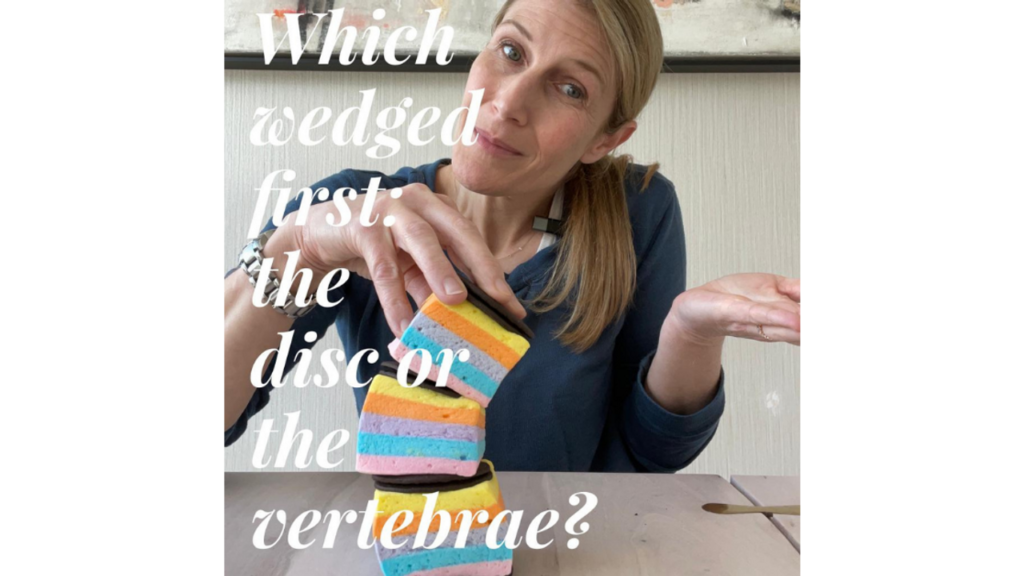Which wedged first: the vertebrae or the disc?
View this post on Instagram

A post shared by Meredith Weiss (@kiokotherapy)
I love the term resilience.
It’s such a key element in our mental well-being and ability to enjoy life, but resilience isn’t just limited to psychology – it’s also a key element in our physical body and our tissues’ ability to rebound from physical stress, too.
One of the most wonderful aspects of being in the field of physiotherapy and scoliosis and spine health are the truly wonderful people in this specialty.
Brilliant research from Dr Rene Castelein and others around the world have recently found what Dr Adams hypothesized two centuries ago – that the flexible, postural component of scoliosis and hyperkyphosis directly and significantly impact the bony, fixed structural component.
Both Dr Castelein, researches in China, and others found that it’s not necessarily the vertebrae to become wedged first when our posture goes south – it’s actually the discs that get wedged first before progressive structural changes begin.
While every spine varies in its presentation, the take home message is clear – your mom was right! Sitting and standing tall are so much more important than we truly appreciated. But sometimes, when we have scoliosis, hyperkyphosis or osteoporosis, we already ARE standing tall – or at least trying our best. This is where schroth and PSSE come in to save our sanity.
By understanding the physics in postural asymmetries, we help people understand their unique curve pattern or spinal imbalance so they have the strength and length to stand their tallest – to actively decompress the spine and promote resiliency in the tissues and the mind.
I’d love your thoughts and questions. Tag a friend or share with someone who may enjoy this information.
